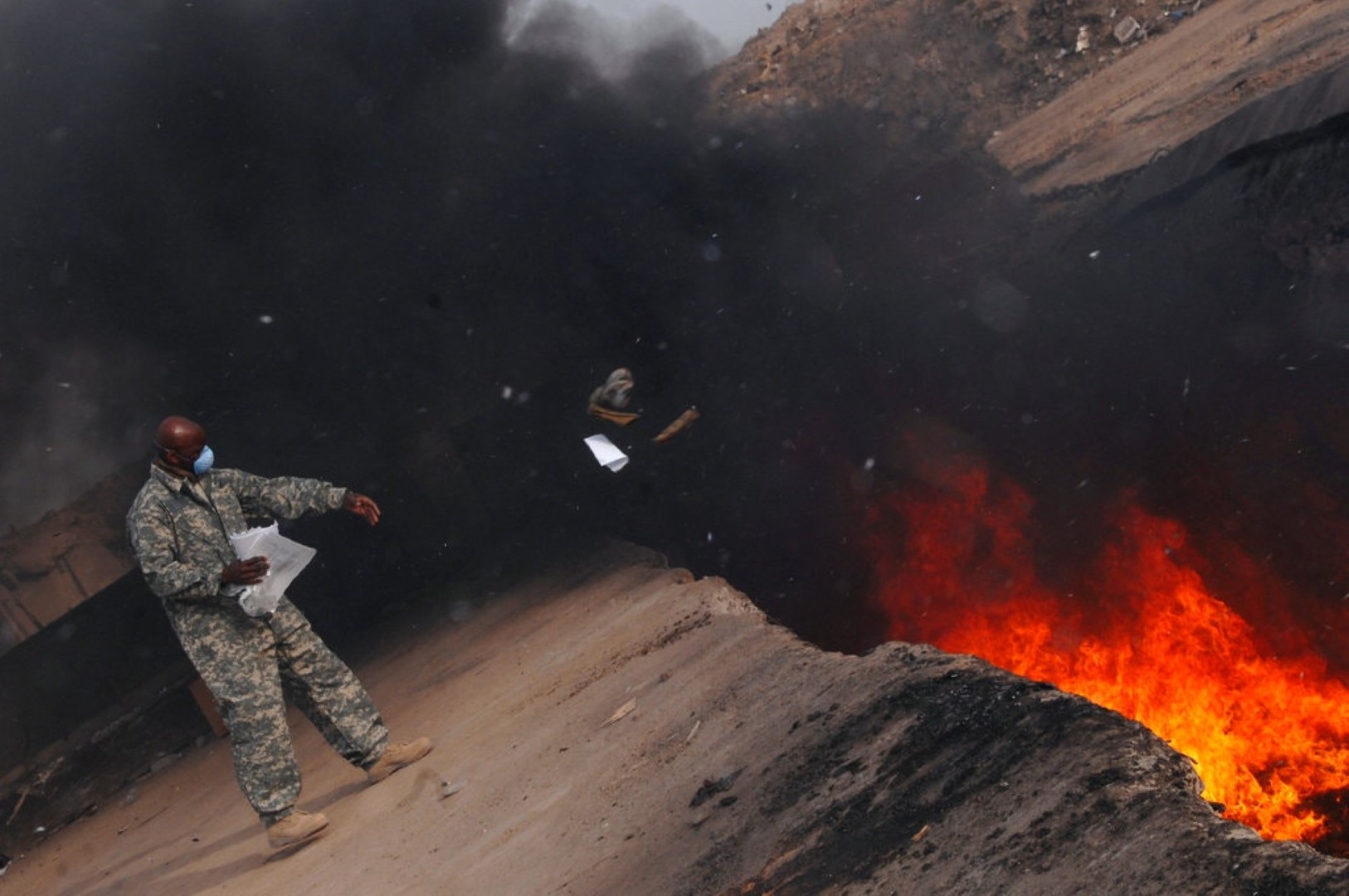
And why not? Who would stop them?
By Matthew Fraser, Opinions Editor
The smoke that is emitted from the military’s burn pits is highly toxic and the soldiers who are forced to breathe it in often comedown with horrific and exotic illnesses.
In recent days, much attention has been placed on the American military and the immediate disaster following its withdrawal from Afghanistan. Harrowing images of Afghani people storming the Kabul airport in hopes of fleeing the Taliban rule have had primetime placement in news feeds. But little attention has been placed—over the past few years—on the horrendous environmental damage that the military has caused.
The American military maintains no less than 78 bases in Japan, and yet through a series of deals and release agreements they are not responsible for any environmental damage they cause in Japan. Taking advantage of these circumstances the military usage of a highly toxic firefighting foam in Okinawa has been frequent and largely unrestricted. Because the US army does not need to be responsible (or even careful) with these foams that has led to the water table in Okinawa being heavily polluted—and the people of the area possessing extraordinarily high levels of the toxins used in these firefighting foams. The levels are so high that citizens petitioned for the local government to filter their water supply until the filtration costs became so excessive that they had to get the federal government to take over the filtering operation. The idea of the American military holding multiple bases in Japan for strategic deterrence during a mostly peaceable era is bad enough, but for them to be poisoning the people who they claim to protect is all that much worse.
One of the more disturbing facts regarding these foreign-military installations is the preferred method of garbage disposal. The US military has grown to favor what have become known as “burn pits”: an ever-burning pit in or near the encampment where all the waste is thrown. Human waste, electronics, medical and toxic waste, batteries, scrap metal, old food, and anything; all is thrown into the pit to be burnt as opposed to being disposed of properly. The smoke that is emitted from these pits is highly toxic and the soldiers who are forced to breathe it in often comedown with horrific and exotic illnesses. Jon Stewart, formerly of the Daily Show, has become a leading emissary in the fight against burn pits and the effort to ensure that the millions of veterans effected are compensated and have their medical treatments fully paid. However, the fact that the military willingly allowed its own personnel to be so heavily exposed to these incinerated chemicals and materials should tell us how little they care about the effects they have on the environment.
But it’s not just abroad where the American military annihilates the environment and recklessly endangers human life; inside American borders the military all too frequently pollutes the land and kills its own citizens. In November of 2016 the US military announced plans to dump 20,000 tons of “environmental stressors” into the coastal waters; almost all of the “environmental stressors” were deemed hazardous by the EPA and considered highly toxic at nearly every level. This is probably best compared to the Fukushima disaster where tonnes of toxic waste leaked into the ocean for months almost completely uninterrupted. Additionally, the decades of nuclear-bomb testing created mountains of nuclear waste and expounded plumes of radioactive isotopes into the air. Some of those tests occurred in New Mexico while others occurred in the Marshall Islands—but all of the testing plus the uranium mining necessary created horrendous toxic conditions which forced the American government to create the Radiation Exposure Compensation Act. Though it’s certainly good to know that the people hurt by these tests may have been compensated, but no such act can remedy what has been done to the environment.
Journalist Abby Martin has been working on a documentary examining all the ways the military has affected the environment and how they may just be the world’s biggest polluters. As the ongoing fight against climate change becomes all the more dire and our window of opportunity closes it may be time to take the fight to the people whose actions most affect the world.

